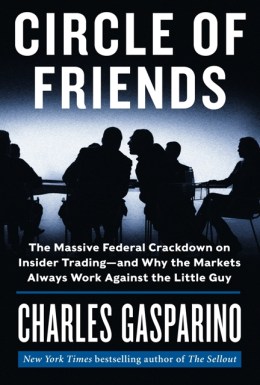
Americans hate cheaters, and they don’t like those who have an unfair advantage, which is why when you ask most people about insider trading, they’ll usually say that the perpetrators belong in jail.
To that end, the biggest coup of the ongoing insider-trading crackdown, at least so far, has been the conviction of Galleon Group founder Raj Rajaratnam, who was found guilty of insider trading and securities fraud and sentenced to 11 years in the same federal prison that houses Bernie Madoff and mob kingpin Carmine “the Snake” Persico. During the course of his career Rajaratnam made a lot of money trading, accumulating a net worth of nearly $2 billion. Wiretaps, government witnesses, and telephone recordings from informants with inside tips paint a wide pattern of abuse, leading to a well-deserved conviction.
Yet even government prosecutors would concede that most of the money he made for himself and for his clients did not come from breaking the law. Largely overlooked by the media was the cost of Rajaratnam’s illegal dealings. Before his arrest in 2009 (and Galleon’s subsequent demise) the fund had accumulated around $7 billion in assets.
To build a fund of that size, Rajaratnam and his team conducted many tens of billions of dollars’ worth of trades to produce overwhelmingly positive annual returns averaging around 25% since 1992 and amounting to billions of dollars in winnings for his clients. Yet the feds say he stole only some $70 million by trading on insider information. That figure, even if it is accurate (his lawyers claim the amount is closer to $7 million), would mean that the vast majority of his trades, billions upon billions in winnings, were perfectly legal.
(MORE: Bond Markets to the Fed: We Don’t Believe You!)
It would also mean that the government spent tens of millions of dollars to prosecute a crime that pales in comparison to many other shady practices that have cost the financial markets and American taxpayers untold billions and possibly trillions of dollars in losses. The shadiest of those practices, of course, led to the 2008 financial crisis, one of the world’s great economic tragedies.
The financial crisis and its continued lack of identifiable culprits is key to understanding why insider trading is all the rage these days with the federal law enforcement bureaucracy, and why men who run hedge funds, like Raj Rajaratnam and Steve Cohen, have become more recognizable household names than those of our banking titans. Of course, bubbles like the one that caused the risk-taking that led to the 2008 collapse are often more about irrational exuberance than the more rational act of fraud. In other words, they are difficult cases to make, and upon taking office in 2009, and with the after-effect of the financial crisis causing massive unemployment, regulatory officials in the Obama administration barely explained those nuances to a skeptical and hurting American public.
What it needed was a white-collar scandal that it could tout as having successfully prosecuted to satisfy the public’s demand for Wall Street scalps, even though insider trading had nothing to do with the practices that led to the banking debacle.
At least that’s what many of the career prosecutors have told me in their more candid moments. Did they make up the crimes of Raj Rajaratnam, David Slaine, and their circle of friends? Of course not; these cases were based on good detective work, informants, and wiretaps that produced overwhelming evidence that the culprits didn’t merely step over the line of what is acceptable behavior—they often drew new boundaries.
But consider the following: The investigations were launched during the waning years of the Bush administration and had been developed by career law enforcement officials from the SEC, the FBI, and the Justice Department. They were developed at a time when Bernie Madoff still roamed free, with some in law enforcement ignoring warnings about his activities, and when risk-taking by the banks grew to enormous heights.
(MORE: How Kids Will Help Decide the Future of Television)
Unlike the minutiae involved in mortgage fraud or Wall Street risk-taking, insider trading cases are, as one prosecutor called them, “sexy,” in that they include wiretapped evidence of tipsters getting not just cash but lobsters and real sex in exchange for their services, as my new book, Circle of Friends, points out. The hedge fund moguls on the other end of the telephone were caught on tape eagerly paying for the information, while bragging about their exploits.
All of this was tailor-made for the Obama administration’s white-collar crime point man, Preet Bharara, the U.S. attorney from Manhattan. Bharara is a smart, capable, and ambitious prosecutor. His critics inside the Justice Department and in the legal community have also described him as a Rudy Giuliani on steroids when it comes to using the media to burnish his image and turn the crime of trading on “material nonpublic information” into the Wall Street crime of the century.
From CIRCLE OF FRIENDS by Charles Gasparino © 2013 Charles Gasparino. Reprinted courtesy of Harper Business, an imprint of HarperCollins Publishers.

